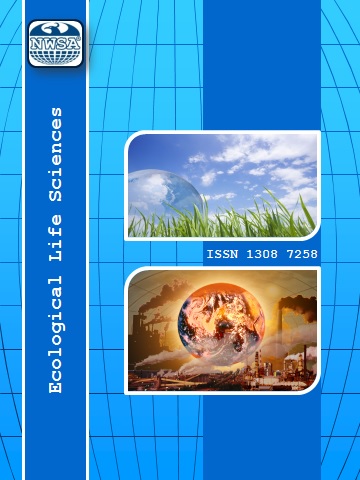References
[1] FAO (Food and Agriculture organization of the United Nations), (2018). The State of World Fisheries and Aquaculture 2018- Meeting the sustainable development goals. Licence: CC BY-NC-SA 3.0 IGO. Rome.
[2] Linhart, O., Stech, L., Svarc, J., Rodina, M., Audebert, J., Grecu, J., and Billard, R., (2002). The culture of European catfish, Silurus glanis, in the Czech Republic and France. Aquatic Living Resources, 15:139144.
[3] Ulikowski, D., Szczepkowski, M., and Szczepkowska, B., (2003). Preliminary studies of intensive wels catfish (Silurus glanis L.) and sturgeon (Acipenser sp.) pond cultivation. Archives of Polish Fisheries, 11:295300.
[4] Jankowska, B., Zakes, Z., Zmijewski, T., Ulikowski, D., and Kowalska, A., (2007). Slaughter value and flesh characteristic of European catfish (Silurus glanis) fed natural and formulated feed under different rearing condition. European Food Research and Technology, 224:453459.
[5] Çelikkale, M.S., (1988). İçsu Balıkları Yetiştiriciliği. Karadeniz Teknik Üniversitesi Basımevi, Genel Yayın No: 124, Cilt:1, Trabzon.
[6] Abou-Zied, R.M., (2015). Effect of stocking density and diet's type on productive performance and economic efficiency of African Catfısh Clarias gariepinus under semi-intensive system. Egyptian Journal of Animal Production, 52(3):163-172.
[7] Ofor, O.C. and Ofonime, E.A., (2015). Effect of stocking densities on growth and feed utilization of hybrid catfish (Clarias gariepinus x Heterobranchus longifilis) fed at 1% body weight. American Journal of Biology and Life Sciences, 3(6):211217.
[8] Oyedeji, F.N., (2016). Assessment of the effects of fish densty on growth rate of african catfish (Clarias gariepinus). International Journal of Scientific and Research Publications, 6(5):567570.
[9] Rahman, A.M., Habib, A.K., Hossain, A.M., Azad, O.S.M., and Rayhan, Z.M., (2017). Impacts of stocking density and economic returns on the cage culture of stinging catfish, Heteropneustes fossilis. International Journal of Fisheries and Aquatic Studies, 5(4):198201.
[10] NRC (National Research Council), (1999). Nutrient Requirements of Fish. National Academy Press, Washington D.C.
[11] Gökçek, K., Öğretmen, F., and Kanyılmaz, M., (2017). Efficacy of Clove Oil, 2-phenoxyethanol and Benzocaine on European Catfish, Silurus glanis Linnaeus 1758. Turkish Journal of Fisheries and Aquatic Sciences, 17:129133.
[12] Halver, J.E., (1989). Fish Nutrition. Second Ed., Academic Press Inc., New York.
[13] Haşimoğlu, S. ve Aksoy, A., (1977). Rasyon Hesaplama Metotları ve Yemleme Prensipleri. A.Ü. Ziraat Fakültesi, Yayın No: 224, Erzurum.
[14] Lovell, T., (1998). Nutrition and Feeding of Fish (2nd Edition), Kluwer Academic Publishers, London.
[15] AOAC (Association of Official Analytical Chemists), (1995). Official Methods of Analysis (16th Edition), AOAC, Arlington, V.A.
 +90(533) 652 66 86
+90(533) 652 66 86 nwsa.akademi@hotmail.com
nwsa.akademi@hotmail.com Fırat Akademi Samsun-Türkiye
Fırat Akademi Samsun-Türkiye
